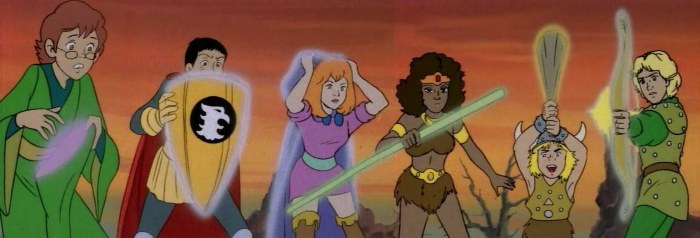
Teaching is about equipping your pupils to eventually slay the dragon
In my younger days I was obsessed with all things Dungeons and Dragons. From the ages of 10 – 20 I spent my time reading about it, talking about it, writing about it and when time allowed, actually playing it.
For the uninitiated (to see if you are initiated, roll a d6. If you get that joke, you’re in) D&D is a roll playing game. A group of people gather around the table, create fantasy characters and complete quests. These quests are written by, and controlled by, the Dungeon Master. The Dungeon Master creates the world in which the adventures take place, create missions for the players and sets up battles with monsters. Unlike many games, there is no board, although figures may be used for battle positions, and the adventure all takes place in people’s minds. The interactions between the players and any other creatures in the game are improvised with the Dungeon Master using them to steer the game.
This is the sound of an analogy being stretched
I would argue that my years spent as a Dungeon Master made me the teacher I am today. I was reflecting on this when reading Mary Myatt’s brilliant book on Curriculum, in which she argues that it is the teacher’s responsibility to ensure that there is a coherent curriculum that tells a story and takes the pupils on a journey. This is a pretty good definition of what happens in Dungeons & Dragons; where you might be planning individual encounters but these build into longer adventures, which in turn becoming part of a larger whole. It may appear times that these adventures stand alone but the very best Dungeon Masters build in recurring themes, motifs and characters. A larger story emerges from the background. There is a clear sense that things are building towards something meaningful.
The Dungeon Master creates a world which they need reveal to the players. They start with basic things they can manage and slowly build up the complexity and difficulty over time. You might decide that in the end you want them to face a terrifying dragon as the villain of the piece. If you introduce it too early they die. Instead, you have to slowly build in the things they will need to slay to this dragon, so they grow stronger and more powerful until they are ready to take on this challenge.
Another important way that this game develops the skill of the teacher is that, like learning, the game all takes place in the minds of each player. For the game to work, your explanation has to be excellent. You have to build up a rich picture in the minds of the players so that everyone knows what is happening and where everyone else is in the story. You might occasionally use visual aids to support this explanation to support their working memory.
Because everything is happening inside people’s heads, mistakes and misunderstands creep in. A mistype in the original game had people walking around in armour not made of leather by of lather – I assume they just slipped away from harm. You might think you have made it clear that the encounter is taking place on a desolate moor but you’d be wrong to assume that everyone around the table has been to a moor and knows what this is like. You need to check in often to make sure that everyone has the same idea as you.
Also, like teaching, the Dungeon Master has a campaign planned out. They know where people should be going and how they should get there, but they are working with a group of other people who are improvising within these parameters. You have to constantly shift your plans to take into account misunderstandings, diversions and, at times, bloody mindedness, to get people back on track and travelling in the way you want them to be.
What Dungeons & Dragons taught me about teaching
- Plan out your curriculum as though you are planning a campaign. Small encounters should be part of a bigger adventure and these adventures should have clear links between them with frequent throw backs to those in the past.
- Know what challenges you want your pupils to be able to overcome and equip them to do so. Don’t send them in to fight the dragon until they are ready to do so.
- Lead pupils through the curriculum and keep them on track. Be ready to improvise when they get off the path. You need to know you stuff well to do this.
- Remember that everything happens inside their heads. Make your explanations come alive to create powerful images. Support this with images.
- Check often that the image that is in your head is the same one that is in theirs.
- Reading, writing and thinking about teaching is easier than actually doing it. When you do it, other people get in the way of your well planned campaign.



